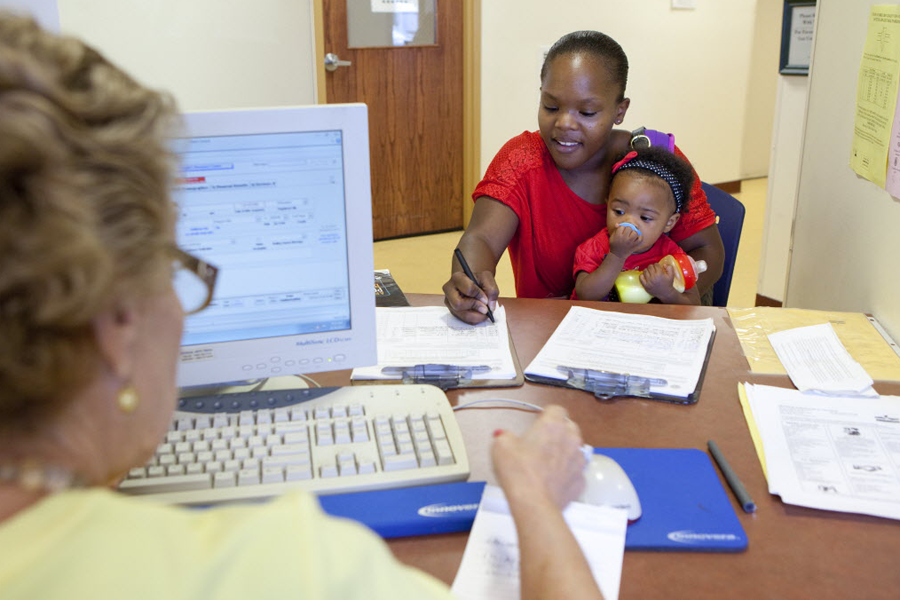The rise of safety-net programs, including those championed by Johnson, has helped to reduce both overall poverty and the likelihood that a single-parent household will be in poverty. Another mitigating factor is rising job opportunities for women.
Yet the number of Americans who live in single-parent households has soared since 1964 – and those families are still more likely to be poor than two-parent households are.
The numbers are stunning in their apparent contradiction: For anyone living in a household headed by a single mother, the odds of living in poverty have fallen from 50 percent in 1964 to 34 percent today. Yet the other side of the coin is that single-mom households now account for a greater share of all poor Americans today (34 percent) than they did in 1964 (21 percent).
Behind this seeming anomaly is the fact that there are simply more single-parent households today. The Census surveys find that 25 percent of Americans now live in “families with a female householder, no husband present.” That’s up from 8.5 percent in 1965. (This story compares 2012 figures with 1964 data when possible, and substitutes the closest possible years otherwise.)
Back then, concern about the decline of traditional family structure stirred discussion as a challenge confronting poor and urban African-Americans. Today, researchers are concerned about declining marriage rates for a broad swath of working-class Americans.
The rise of single-parent households heightens the risk of poverty for both parents and children. And, although there's been a rise in the number of children being raised by two unmarried adults, the overarching family trend since 1964 is a rise of single-parent households.
"Research has consistently shown that both divorce and nonmarital childbearing increase child poverty," University of Virginia demographer Brad Wilcox wrote in a 2010 report.






